The content of the article
Kohlrabi began to be cultivated in the 1st century BC, over time, it was undeservedly pushed aside by other types of vegetables. In recent years, its popularity is again confidently reviving, thanks to its rich composition and interesting cooking recipes. The peculiarity of kohlrabi is that when frozen and heat treated, it retains most of the nutrients.
Description and Features
Kohlrabi looks very different from other types of cabbage, with juicy wide leaves. It is more like a root crop, misunderstanding growing on the surface. Similarities are added by rare leaves on a long stalk and a dense stembled, causing associations with turnips, radishes and beets at the same time. In translation, the name sounds like "cabbage - turnip." Its flesh is under a dense skin, the color of which is greenish, white or purple, depending on the variety. It is mistakenly believed that kohlrabi is a separate variety of cabbage. Indeed, the plant belongs to a two-year-old, cruciferous family, a genus of cabbage. But from a wild ancestor, breeders have bred a lot of individual varieties and hybrids that differ in planting terms, taste, size, color, storage and transportation.
Distinguish between white and purple varieties, they are similar in composition and include such beneficial substances as:
- vitamins;
- micro and macro elements;
- cellulose;
- water;
- ash;
- organic acids;
- starch;
- mono and polysaccharides.
The most popular for landing are Vienna White, Moravia, Athena. The peculiarity of most varieties of kohlrabi is their early maturity. After sowing, the crop is ready for harvest on 65 - 90 days. For winter storage, landing is carried out as late as possible, in mid-June.
Beneficial features
Children are often asked to clean the stalk of white cabbage and gnaw the juicy slices of kohlrabi with enthusiasm, and it is impossible to deceive the children. They intuitively feel the benefit. Regular use of fresh stem stems helps with:
- reduced immunity;
- anemia
- chronic edema;
- impaired kidney function;
- the threat of the formation of sand and stones;
- inflammatory processes of the genitourinary system;
- stagnation of bile;
- lack of appetite;
- elevated cholesterol;
- threat of heart attack.
A few pieces of kohlrabi normalizes the acid-base balance, prevents the formation of tartar. Steamed dishes made of steamed fruit help to reduce body weight due to low calorie content and high content of dietary fiber.
If there is an allergy to cabbage, then it is necessary to attribute it to kohlrabi with caution. Also, do not abuse dishes from it with exacerbations of diseases of the gastrointestinal tract and kidneys, flatulence, diarrhea, during breastfeeding.
Ways to save and harvest
This vegetable goes well with many products, used as a side dish for meat, fish, poultry and as an independent dish. It contains many useful substances. The preservation of such a useful product should be taken care of in advance.
It is worth considering: stalkbleeds perfectly tolerate drying, freezing and salting.
There are several ways to preserve the nutritional value and taste of this representative of the cabbage family until a new crop.
Cellar or basement
The best place to store fresh vegetables.
You should know: only undamaged pre-dried fruits are sent to the bookmark. You can’t wash them, just wipe them with a soft cloth from soil residues.
You can save stems with any of 3 methods.
- By weight, as well as white cabbage by attaching to the spine. For this, the basics are pulled and each fruit is attached to them separately at intervals of 3-4 cm.The main thing is that they do not touch each other and there is a small gap between them for free air circulation.
- In baskets or low fruit crates, vegetables also tolerate storage. They are placed in 1 layer, regularly sorted out in order to remove spoiled in time.
- In sand. This is the most time-consuming, but reliable option. Kohlrabi is placed on a layer of wet sand, then the layers alternate, not more than 5. Top cover with a film with holes. This method allows you to save them until spring, without overdrying.
Important: while storing kohlrabi in the cellar, you need to maintain high humidity and periodically ventilate the room.
Fridge
If you need to overexpose vegetables 2-3 weeks before further processing, then the lower shelves of the refrigerator are well suited. For this:
- heads are thoroughly washed;
- cut the leaves;
- each stempled is wrapped in paper or gauze;
- stacked in a bag with holes for ventilation;
- placed in the refrigerator.
For long-term storage, this method is not suitable, by the 4th week the vegetables begin to deteriorate.
Freezer
When freezing, heads of cabbage do not lose useful properties, the main thing is to cook them without waiting for defrosting. They are stored in chopped or grated form.
Vegetables are carefully inspected, removing damaged ones, cut petioles with leaves, and wash under running water. The peel is cut with a sharp knife. Further processing depends on the selected storage method.
The grated pulp is immediately laid out on the packaging bags and frozen. Larger whetstones need preparation. It consists in boiling them in salted boiling water for 3-4 minutes. Then the brine is drained, excess moisture is removed, and the pieces are laid out in bags and put into the freezer. For convenience, they should be immediately distributed in portions. Shelf life is about 10 months without loss of taste.
Balcony
It can also serve as a temporary basis for the preservation of the crop. If it is dry and warm, then the period will not exceed 2-3 weeks, if it is cold and wet, then 60-80 days. The reason is the instability of the conditions, so the balcony is considered as a short-term measure.
Trench
In the absence of a cellar, you can dig up the soil to the freezing border, spill the bottom with sand, and install boxes with heads of cabbage mixed with sand. Lay the walls and spaces between the tanks with straw, then completely cover them with earth, making a slight elevation. Vegetables are stored until the summer, getting uncomfortable.
Drying
Thin slices of stems are perfectly stored in a dried state. To do this, the selected heads of cabbage are washed, cleaned, cut into thin rings or straws. Dip for 3 minutes with salted boiling water, recline in a colander. The dried slices are laid out on a baking sheet lined with parchment paper in 1 layer and sent to the oven for 3 hours with minimal heating. For uniform drying, the pieces are mixed several times. Then it is cooled and laid out in a hermetically sealed container.
Winter blanks
Like the more common types of cabbage, kohlrabi can be pickled, salted, fermented. If salt and vinegar are included in the recipe, such preparations do not require special conditions and are stored at room temperature. Sauerkraut is cleaned in a cool, dark place or in the refrigerator.
Salads, soups, stews are prepared from kohlrabi, stuffed small cabbages with various fillings, and added to vegetable mixtures. Timely harvested, processed and successfully stored vegetables greatly diversify the menu for a long cold winter.
Video: how to grow kohlrabi cabbage


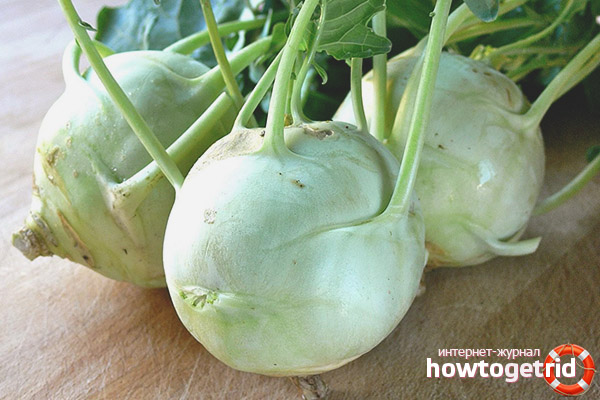

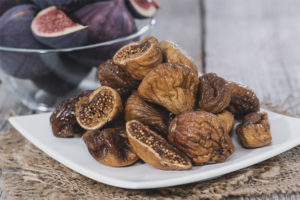


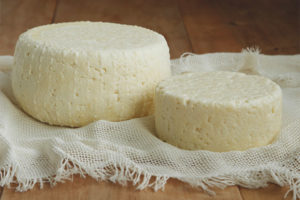
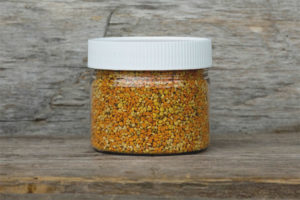
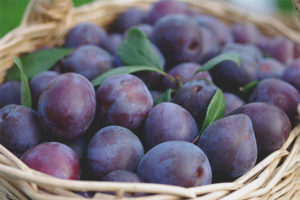
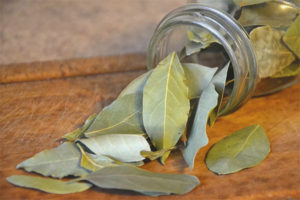
Submit